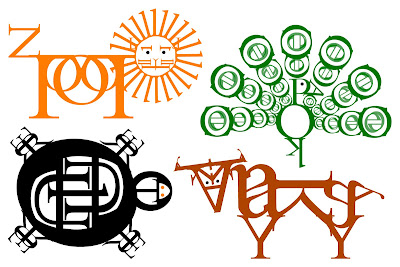Usually one to follow trends way after they're trends, I read Dan Brown's Da Vinci Code after it first became a big deal. A few weeks ago, my roommate Mark was obsessively reading Angels and Demons, Brown's first book featuring character Robert Langdon. When Mark went home for spring break and I decided to stay in the dorm, I eventually picked up the book and started reading since Mark had quickly finished it.
I'm almost halfway through the book, which has already featured two ambigrams. Ambigrams are graphical figures that spell out one or more words in the way presented and in another direction or orientation. A little researched revealed that John Langdon claims to have invented the ambigram along with Scott Kim in the 1970s. Ambigrams became much more popular after Angels and Demons, and Brown has acknowledged that the last name of his character is a nod to John Langdon, who actually designed the ambigram that was used on the book cover.
The image above is a design I found online, and I included a rotated image on the right for your convenience. The words "drink guide" look exactly the same as is or upside-down, while the three heads become three new heads when flipped 180 degrees.
I once tried to turn my name into an ambigram, with mixed success. Perhaps I shall soon try again and share my results...
-J. Gibb
P.S. Since this blog's inception, I've posted a new addition each day. This was due to excitement and wanting to have lots of content waiting for potential new "followers." It will probably be a little over a week until my next post, as I will be gone to the Adventist Intercollegiate Association annual convention at Columbia Union College from Monday through Sunday. Until then, faithful readers!




